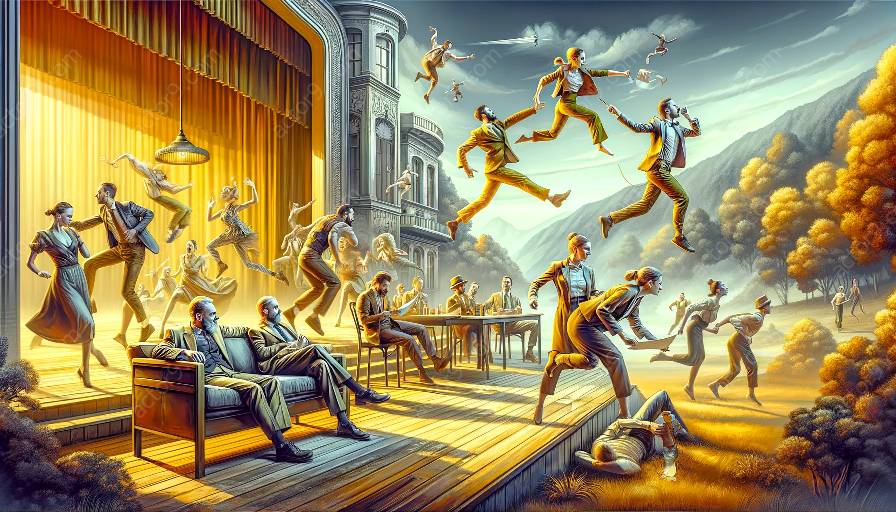Comedic physical theatre is a unique art form that combines physicality, humor, and storytelling to captivate audiences. The comedic aspects of physical theatre have been greatly influenced by various historical and cultural factors that have shaped the art form over the centuries. To fully understand the evolution of comedic physical theatre, we must delve into its historical influences and the impact they have had on this fascinating performance style.
The Origins of Physical Theatre
Physical theatre has a rich history that can be traced back to ancient Greece, where it was an integral part of dramatic performances. The ancient Greek plays, especially comedies, often incorporated exaggerated physicality and movement to entertain the audience. This early tradition of physical expression and comedy laid the groundwork for the development of comedic physical theatre.
Commedia dell'arte: The Birth of Comedic Physical Theatre
One of the most significant historical influences on comedic physical theatre is the Italian tradition of Commedia dell'arte. Emerging in the 16th century, Commedia dell'arte was a form of improvised comedy that relied heavily on physicality, acrobatics, and slapstick humor. The stock characters and exaggerated movements of Commedia dell'arte greatly contributed to the development of comedic physical theatre as we know it today.
Vaudeville and Music Hall: The Rise of Physical Comedy
During the 19th century, vaudeville and music hall performances became popular forms of entertainment, featuring a wide array of comedic acts that heavily relied on physical humor and clowning. This era saw the emergence of famous comedic performers who utilized physicality and slapstick to create laughter, further shaping the comedic aspects of physical theatre.
Buster Keaton and Charlie Chaplin: Pioneers of Physical Comedy
The golden age of silent films saw the rise of iconic comedians such as Buster Keaton and Charlie Chaplin, who revolutionized physical comedy through their silent performances. Their use of exaggerated movements, stunts, and visual gags left a lasting impact on comedic physical theatre, influencing generations of performers to come.
Modern Influences: Physical Comedy in Contemporary Theatre
In the 20th and 21st centuries, physical comedy has continued to evolve and adapt to contemporary theatre. Influential practitioners like Jacques Lecoq and Philippe Gaulier have integrated physicality and humor into their training methods, inspiring a new wave of performers to explore the comedic potential of physical theatre.
The Impact of Historical Influences on Comedic Physical Theatre
The historical influences on comedic physical theatre have effectively shaped the art form, contributing to its development and evolution. By studying the origins of physical theatre, the legacy of Commedia dell'arte, the influence of vaudeville and music hall, and the pioneering work of silent film comedians, we gain valuable insights into the comedic aspects of physical theatre and its enduring appeal.




































